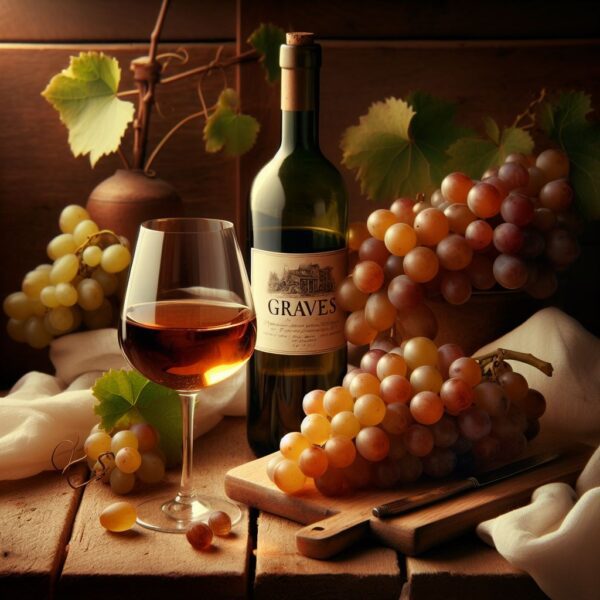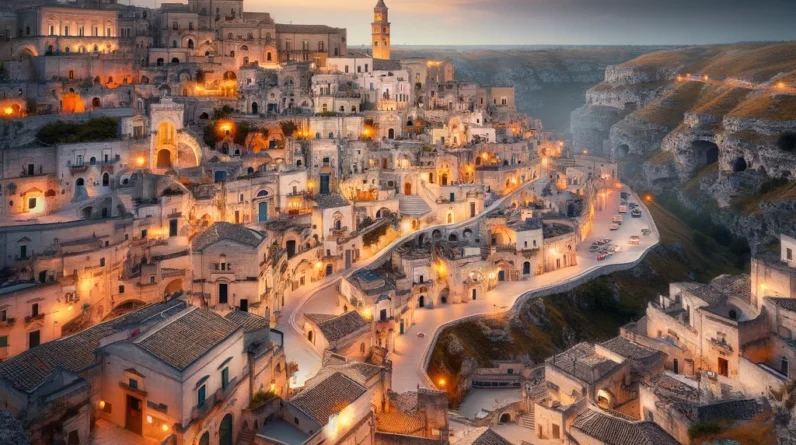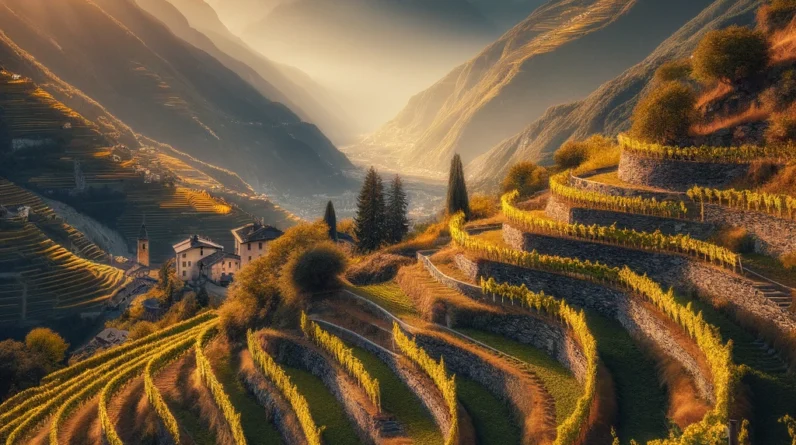
Unveiling the Hidden Gems of Graves
Imagine a land where time seems to stand still, where each vineyard tells a tale as old as time, and where the wine isn’t just a beverage but a whisper from history itself.
This is Graves, an unassuming hero in the world of fine wines.
Here, amidst the gentle slopes and ancient soils of this revered French wine region, something magical happens.
Each bottle is not just a drink, but a story, an art form, a legacy.

Nestled in the Bordeaux region, Graves is often overshadowed by its more illustrious neighbors.
Yet, in this underappreciated jewel lies a world of sensory delights waiting to be discovered.
It’s a place where tradition and innovation dance a delicate ballet, where the winemakers are not just artisans but guardians of an age-old heritage.
In this journey, we’re not just exploring wines; we’re uncovering secrets, unraveling history, and indulging in the luxurious tapestry of flavors and aromas that make Graves wines a symphony for the
senses.
Prepare to be enthralled as we embark on a voyage through the vineyards of Graves, where each grape, each vine, tells a story of passion, perseverance, and unparalleled craftsmanship.
Welcome to the Wines and Vineyards of Graves – a hidden treasure in the world of viticulture, waiting to captivate your palate and your heart.
The Science and Art Behind Graves Wines
Understanding the technical intricacies of the Wines and Vineyards of Graves is like delving into a fascinating blend of science, tradition, and art.
Let’s break down these complex concepts into easily digestible segments, using a balance of technical detail and accessible language.
Terroir – The Foundation of Character
Soil Composition
Graves is renowned for its unique gravelly soil (hence the name ‘Graves’), which is a blend of gravel, sand, and clay.
This soil is excellent for drainage, forcing the vines to grow deep roots, a factor that significantly contributes to the complexity and flavor profiles of the wines.
Climate
The region enjoys a temperate oceanic climate, characterized by mild winters and hot summers.
The proximity to the Atlantic Ocean and the forest of Landes provides a stabilizing influence on the climate, crucial for grape growing.
Grape Varieties and Blending Techniques
Red Grapes
Predominantly Merlot and Cabernet Sauvignon, along with Cabernet Franc and Petit Verdot.
These varieties contribute to the rich, full-bodied nature of Graves reds.
White Grapes
Sémillon, Sauvignon Blanc, and Muscadelle are the primary white grape varieties.
They produce wines that are aromatic and have a balanced acidity.
Blending
Blending is an art in Graves, where winemakers carefully select the proportion of each grape variety to achieve a harmonious balance of flavors and aromas.
Here’s a table outlining the primary grape varieties used in Graves, along with their characteristics and contributions to the wine’s flavor profile:
| Grape Variety | Type (Red/White) | Characteristics | Contribution to Flavor Profile |
|---|---|---|---|
| Cabernet Sauvignon
| Red | Full-bodied, with high tannins | Adds structure, flavors of blackcurrant, and aging potential |
| Merlot
| Red | Softer and fruitier than Cabernet Sauvignon | Contributes plum and cherry flavors, and a smooth texture |
| Cabernet Franc
| Red | Medium-bodied with herbaceous notes | Provides finesse, spice, and complexity |
| Petit Verdot
| Red | Deep color, high tannins | Adds color, tannic backbone, and floral aromas |
| Sémillon
| White | Full-bodied, susceptible to noble rot | Offers honeyed richness and texture, especially in sweet wines |
| Sauvignon Blanc
| White | High acidity, aromatic | Brings freshness, acidity, and citrus or grassy notes |
| Muscadelle
| White | Floral, slightly musky | Adds floral aromatics and a hint of sweetness |
This table provides a snapshot of the diverse grape varieties that contribute to the complexity and allure of Graves wines.
Each variety brings its unique qualities to the blend, creating a harmonious balance that is characteristic of Graves wines.
Winemaking Process
Harvesting
The grapes are harvested at optimal ripeness, a critical step that determines the sugar, acid, and flavor balance in the wine.
Fermentation
Controlled fermentation, often in stainless steel tanks for whites and oak barrels for reds, allows for the development of the wine’s character.
Aging
The wines of Graves, especially reds, are known for their aging potential.
Aging in oak barrels imparts complexity and depth to the wine.
Bottling
After aging, the wine is bottled and can continue to mature, developing more nuanced flavors over time.
Sustainable Practices and Innovations
Organic Farming
Many wineries have adopted organic practices, avoiding synthetic pesticides and fertilizers.
Biodynamic Principles
Some vineyards follow biodynamic principles, treating the vineyard as a self-sustaining ecosystem.
Water Management
Innovative irrigation and water management techniques are employed to conserve water and adapt to changing climatic conditions.
Sensory Profile and Tasting Notes
Red Wines
Typically have notes of dark fruits, tobacco, and earth, with a structure that allows them to age gracefully
White Wines
Characterized by their crispness, with flavors of citrus, green apple, and floral notes, often with a hint of minerality.
The Most Notable Vineyards
Here’s a table highlighting some of the most renowned vineyards in Graves, along with details about their notable wines and unique features:
| Vineyard Name | Established Year | Notable Wines | Unique Features |
|---|---|---|---|
| Château de Chantegrive
| 1966 | Château de Chantegrive Cuvée Caroline | Known for its balanced reds and complex, aromatic whites. |
| Château Rahoul
| 17th Century | Château Rahoul | Renowned for both its red and white wines, with a focus on elegance and finesse. |
| Château Ferrande
| 1880 | Château Ferrande | Recognized for high-quality red and white wines, emphasizing traditional Graves characteristics. |
| Château Haura
| 17th Century | Château Haura | Noted for its commitment to sustainable viticulture and expressive, terroir-driven wines. |
| Clos Floridène
| 1982 | Clos Floridène | A relatively new vineyard making a mark with its intensely flavored and well-structured wines. |
| Château Graville-Lacoste
| 18th Century | Château Graville-Lacoste | Esteemed for its crisp, aromatic white wines that showcase the classic Graves terroir. |
| Château Crabitey
| 1872 | Château Crabitey | Offers wines that beautifully represent the Graves appellation, known for both reds and whites. |
Below is a table showcasing some of the best vintages from Graves, highlighting the years that produced exceptional wines, along with notes on their quality, aging potential, and unique
characteristics:
| Vintage Year | Wine Type (Red/White) | Quality Notes | Aging Potential | Unique Characteristics |
|---|---|---|---|---|
| 1989
| Red | Exceptional | Long-term aging | Rich, complex, with concentrated flavors |
| 1990
| White | Outstanding | 20+ years | Vibrant acidity, rich fruit flavors |
| 2000
| Red | Excellent | 20-30 years | Deeply colored, structured, with balanced tannins |
| 2005
| Red and White | Superb | 30+ years | Reds are powerful and aromatic; whites are balanced and vibrant |
| 2009
| Red | Outstanding | 30+ years | Lush, opulent, with silky tannins and rich fruit |
| 2010
| Red and White | Exceptional | Long-term aging | Reds are dense and powerful; whites show great finesse and complexity |
| 2015
| Red | Excellent | 20-30 years | Elegant, with a fine balance between fruit and structure |
| 2018
| White | Very Good | 15-20 years | Fresh, aromatic, with a good balance of acidity |
This table provides an overview of some of the most acclaimed vintages from Graves, reflecting both the red and white wines‘ exceptional qualities.
The noted vintages are widely recognized for their superior quality, expressive character, and potential for aging, making them sought after by collectors and enthusiasts alike.

Historical Evolution: Tracing the Roots of Graves’ Wine Legacy
The story of Graves’ wines is not just a chapter in viticulture; it’s an epic saga that intertwines with the very fabric of history.
This tale begins in ancient times, a period so distant that the vines seem to have been a part of the landscape since time immemorial.
The Romans, those great cultivators of the grape, first recognized the potential of this region, but it was during the Middle Ages that Graves truly began to flourish.
Fast forward to the 17th century, and we witness a pivotal moment for Graves.
The Dutch, in their quest for wines to satisfy a growing international market, drained the marshlands of Médoc, inadvertently setting the stage for Graves to shine.
It was during this era that Graves established its reputation for producing wines of exceptional quality, a reputation that has only grown over the centuries.
The 18th and 19th centuries marked the golden age of Bordeaux wines, and Graves was no exception.
It was during this time that the region’s winemakers honed their skills, refining their techniques to create wines that were not just good but extraordinary.
The classification of 1855, which primarily celebrated the wines of Médoc, sadly overlooked Graves, yet this did not deter the region’s vintners.
Instead, it fueled a commitment to excellence that still defines the region today.
Enter the 20th century, a period of both turmoil and triumph for Graves.
The devastation of phylloxera, two World Wars, and the Great Depression posed significant challenges.
Yet, the resilience and ingenuity of Graves’ winemakers shone through.
Innovations in viticulture and winemaking, coupled with a renewed emphasis on quality over quantity, led to a renaissance for Graves wines.
Today, Graves stands as a beacon of quality and tradition in the Bordeaux region.
Its red wines are renowned for their depth, complexity, and aging potential, while the whites are celebrated for their crisp acidity, minerality, and aromatic complexity.
The region’s commitment to quality is evident in every bottle, a testament to the centuries of knowledge, passion, and dedication that have shaped its wines.
From ancient times to the modern day, the vineyards of Graves have been a constant presence, evolving and adapting but always maintaining their essence.
The wines of Graves are not just products of the land; they are the legacy of generations of winemakers who have poured their hearts and souls into every vine, every grape, every bottle.
This is the historical tapestry that gives Graves wines their unique character, a character that continues to evolve while staying true to its roots.

The Versatile World of Graves Wines
Today, the Wines and Vineyards of Graves are not just a symbol of French viticultural excellence but a versatile player in a global stage that transcends the wine industry.
From haute cuisine to sustainable agriculture, from tourism to technological advancements in winemaking, Graves’ influence is both far-reaching and profound.
Culinary Delights
In the world of haute cuisine, Graves wines are indispensable.
Chefs around the globe treasure these wines for their ability to complement and enhance a wide array of dishes.
The crisp, minerally white wines of Graves are a sommelier’s dream for pairing with seafood, while the complex, robust reds are perfect for richer dishes like game and red meats.
The versatility of Graves wines in gastronomy cannot be overstated.
Sustainable Viticulture
Graves’ vineyards are at the forefront of sustainable winemaking practices.
Many vineyards in the region have embraced organic and biodynamic farming methods, recognizing the importance of biodiversity and ecological balance in creating not just better wines, but also
in contributing to a healthier planet.
This commitment to sustainability is setting a benchmark for vineyards worldwide.
Wine Tourism
The charm and beauty of the Graves wine region make it a magnet for wine tourism.
Visitors from across the globe flock to the region to experience its vineyards, partake in wine tastings, and immerse themselves in the rich cultural heritage of the area.
This has not only boosted the local economy but also helped in spreading the fame of Graves wines far and wide.
Technological Innovation
In the realm of winemaking technology, Graves is not left behind.
Wineries in the region have been quick to adopt new technologies, from drone vineyard monitoring to precision fermentation techniques.
These advancements have contributed to the consistent high quality of Graves wines, ensuring that each vintage can meet and exceed the expectations of a discerning global market.
Education and Research
Graves has also become a center for oenological education and research.
Institutions and wineries in the region offer programs and workshops, sharing knowledge and practices with aspiring winemakers and wine enthusiasts.
This exchange of knowledge is vital in ensuring the longevity and continuous evolution of the winemaking tradition.
In essence, the Wines and Vineyards of Graves are a testament to the adaptability and relevance of traditional winemaking in the modern world.
Whether it’s setting trends in the culinary world, championing sustainability, attracting tourists, embracing technological innovation, or contributing to educational and research endeavors, Graves
wines continue to make their mark, proving that they are much more than just a beverage; they are a cultural icon, a symbol of excellence, and a beacon for the future of viticulture.
Celebrating the Essence of Graves
As we draw our journey through the Wines and Vineyards of Graves to a close, let’s take a moment to reflect on the profound significance of this extraordinary wine region.
Graves, with its deep roots in history, its rich tapestry of terroir, and its commitment to excellence, stands not just as a testament to great winemaking but as a symbol of resilience, innovation, and
passion.
Key Takeaways:
- Historical Legacy: Graves’ wines are steeped in history, embodying centuries of winemaking tradition and expertise.This legacy is more than a story; it’s a living heritage that continues to evolve and inspire.
- Technical Mastery: The technical aspects of viticulture and winemaking in Graves are a confluence of science and artistry, showcasing how attention to detail and respect for nature canproduce wines of exceptional quality.
- Innovation and Adaptation: Graves’ response to challenges such as climate change and evolving market demands is a beacon for the wine industry, demonstrating that tradition andinnovation can coexist harmoniously.
- Cultural and Sensory Experience: The wines of Graves offer a sensory journey like no other, inviting connoisseurs and novices alike to experience a palette of flavors and aromas that are asrich in history as they are in taste.
The Future Beckons: Graves’ wines are not just relics of the past; they are vibrant, dynamic entities shaping the present and future of wine.
As we look forward, we see a path marked by sustainable practices, technological advancements, and an unyielding passion for excellence.
A Call to Action: I encourage you to delve deeper into the world of Graves.
Visit the region, taste its wines, and immerse yourself in its story.
Share your experiences and thoughts on this remarkable wine region.
Let’s continue the conversation, exploring and celebrating the enduring legacy of the Wines and Vineyards of Graves.
In conclusion, Graves is more than a wine region; it’s a journey through time, a canvas of nature, and a symphony of flavors.
It’s a world waiting to be explored, appreciated, and cherished.
Here’s to the enduring spirit of Graves – may its wines continue to captivate and inspire for generations to come.
FAQs:
1. What makes the Graves region unique in the world of winemaking?
Graves is renowned for its gravelly soil, which imparts a distinct minerality to its wines.
Its unique terroir, historical significance as the oldest wine region in Bordeaux, and a combination of traditional and innovative winemaking practices make it a standout in the global wine
community.
2. What types of grapes are grown in Graves?
Graves is known for both red and white grape varieties.
The primary red grapes are Cabernet Sauvignon, Merlot, Cabernet Franc, and Petit Verdot.
For white wines, the main varieties are Sémillon, Sauvignon Blanc, and Muscadelle.
3. Are Graves wines suitable for aging?
Yes, particularly the red wines of Graves are known for their aging potential, thanks to their structure and complexity.
Many Graves reds can be aged for several decades, developing richer flavors and aromas over time.
4. Can you visit vineyards in the Graves region?
Absolutely! Many vineyards in Graves welcome visitors for tours and tastings.
It’s a fantastic way to experience the region’s history, culture, and of course, its exceptional wines.
5. How does the climate of Graves affect its wines?
The temperate oceanic climate, influenced by the nearby Atlantic Ocean and the Garonne River, provides moderate temperatures and sufficient rainfall, creating ideal conditions for vine growth
and grape ripening.
This results in well-balanced wines with good acidity.
6. How does Graves’ wine compare to other Bordeaux wines?
Graves wines are often characterized by their elegance and balance.
While they share some similarities with other Bordeaux wines, Graves’ unique soil and microclimate impart distinct characteristics, especially the notable minerality in the white wines.
7. What food pairs well with Graves wines?
Red Graves wines pair beautifully with red meats, game, and rich sauces, while the whites are excellent with seafood, poultry, and lighter dishes.
The versatility of Graves wines makes them a favorite for food pairings.
8. What are the sustainable practices followed in Graves vineyards?
Many vineyards in Graves are adopting sustainable practices, including organic farming, biodynamic principles, and water conservation techniques, ensuring environmental responsibility and
quality wine production.
9. How can one identify a Graves wine?
Graves wines are typically labeled as such.
Look for “Graves” on the label, which indicates that the wine comes from this specific region.
The wines may also be labeled with the name of the specific appellation within Graves, like Pessac-Léognan.







